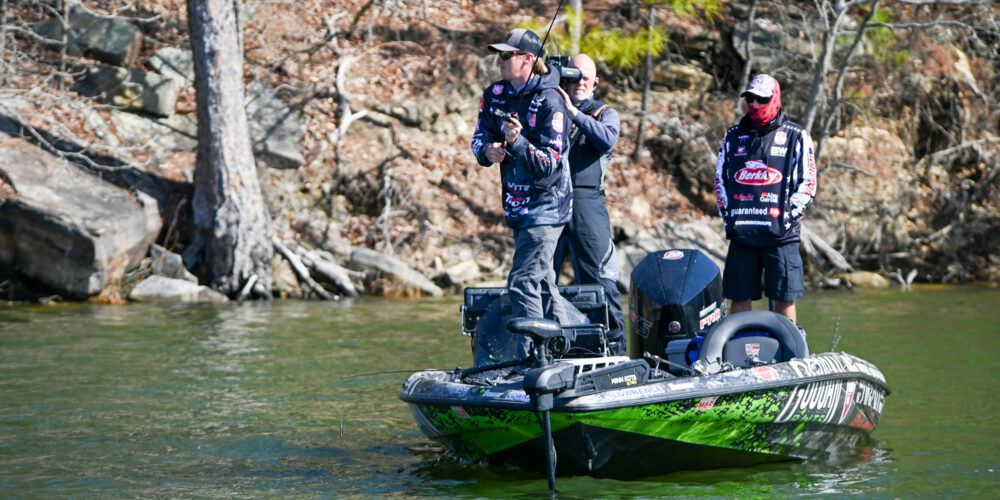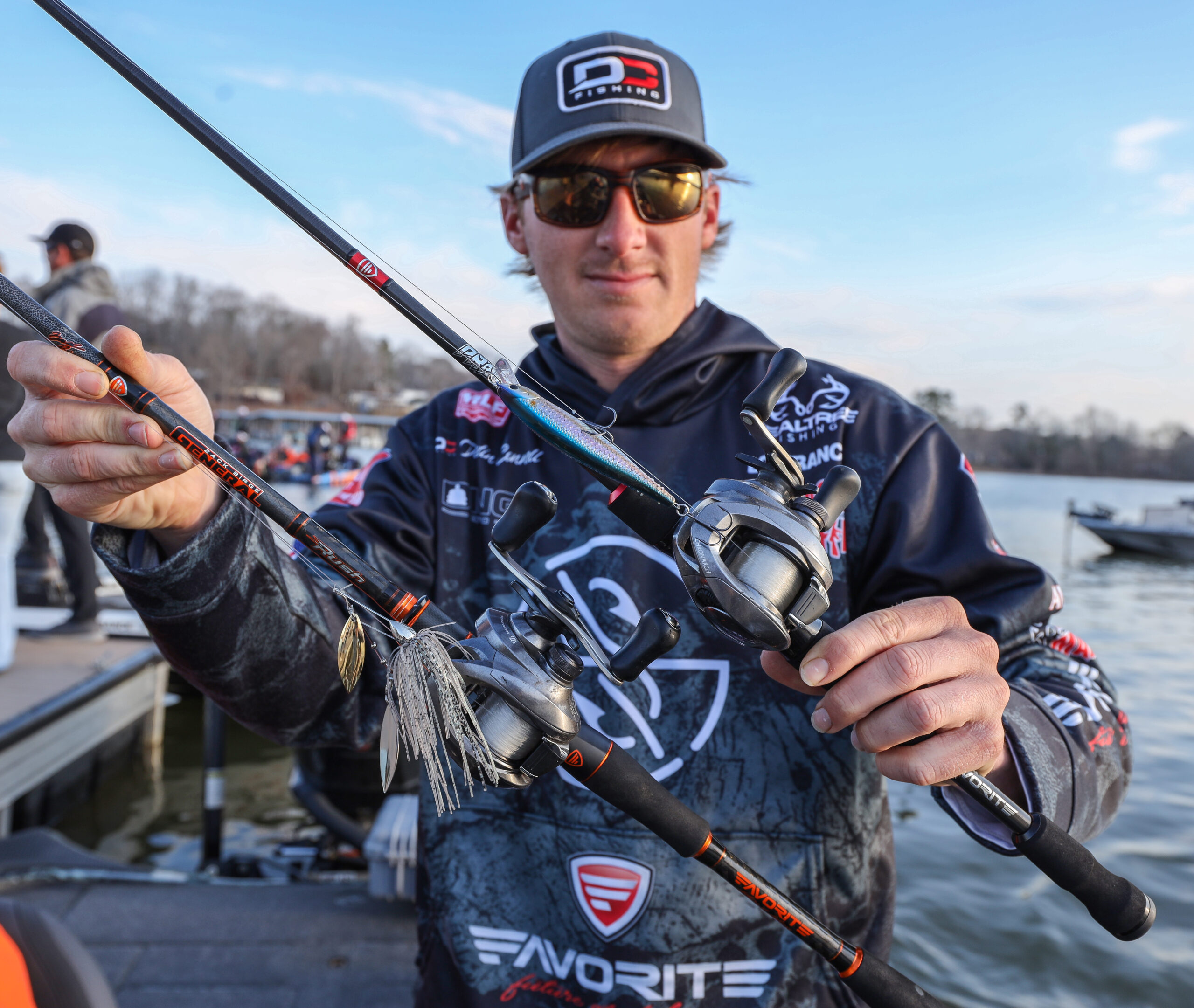Spotted Bass 101 with Favorite Pro Dustin Connell
“It’s the same principle no matter where you go: Try to find the bait.”

CULLMAN, Ala. – The spotted bass usually takes a back seat to its largemouth and smallmouth cousins, but understanding how to catch spots is a must in certain regions of the country. Alabama – site of Favorite Fishing Stage Three Presented by Mercury – is one of those pockets where spotted bass are abundant and frequently contribute to tournament wins.
Favorite Fishing pro Dustin Connell is one of the best in the country at understanding their peculiarities – in Alabama and everywhere else.
Connell’s spotted bass training ground is the famed Coosa River Chain, which is known for the size of its spots, but his approach applies everywhere. He keeps a similar thought process when fishing for spotted bass outside the Coosa, but adjusts his gear based on where he’s fishing.
The Same, but Different
There are scientifically recognized subspecies of spotted bass around the country, including the northern spotted bass and Alabama bass – or “Coosa spotted bass” – which call Alabama home.
Fishing the Coosa Chain near Connell’s home in Clanton, Alabama – including lakes Jordan and Mitchell and the Alabama River – is very different fishing than on Smith Lake, even though Smith Lake’s spots and Coosa fish are the same subspecies.
“The Coosa River spotted bass is world famous and the fish there are all current related,” Connell said. “They pull water from the hydroelectric dams and that’s when they bite best, when the water is moving.”
Connell’s hometown spotted bass are big, mean and eat big lures in stained water, a stark contrast to the clear-water spotted bass in other lakes, including Smith Lake.
“People are intimidated by spotted bass and think it’s only a light-line, shaky head fish, but they’ll bite a lot of different lures and can be pretty predictable,” he said. “They’re different, but they act the same – no matter what strain they are – and follow the baitfish. Old ‘Larry the Largemouth’ wants to sit next to a tree or a stump and spots couldn’t care less about that. They’re following the bait.”

Coosa River Approach
When fishing the Coosa River lakes and the Alabama River, Connell goes big with crankbaits, heavy spinnerbaits, and jigs. He’s generally fishing areas with a heavy current flow that puts the fish in predictable locations around current breaks.
“Those three baits in middle of Alabama and along the whole Coosa River chain will get bit,” he said. “I throw ¾- and 1-ounce spinnerbaits and ½ and ¾-ounce jigs on big rods and 20-pound Seaguar InvizX Fluorocarbon. They eat big baits and you can get away with heavy tackle because the water is dingier than somewhere like Smith Lake.”
For spinnerbaits, Connell likes a 7-3 heavy Favorite Fishing Pro Series and for jigs, he opts for a 7-2 medium heavy Dustin Connell Signature Series rod in the Summit lineup.
Another tool in his arsenal is a crankbait, which is relatively new to him for spotted bass.
“I’m not a big crankbait guy, but I’ve been doing a lot more of it with all of the rain and flowing water this year,” Connell said. “I’ve been having success cranking rockpiles and eddies with a 10- to 12-foot diver with a 7-2 medium heavy Favorite Sick Stick.”
Clean-Water Spotted Bass
When away from home, Connell busts out the spinning tackle and uses a more finesse approach with light line and smaller baits.
“For Smith Lake, I have five Favorite Hex Series rods rigged up,” he said. “I have two 6-10 mediums and three 7-2 medium heavy models on my front deck. If I were at home, I would have none of the same tackle tied on.”
Among his lures at Smith Lake is a wacky rig, and he prefers the 6-10 Hex model for that technique.
“The shorter rod makes all the difference in getting accurate skips under docks,” he said. “The Hex is the best spinning rod I’ve ever used and so light that you can make those quick flicks of the wrist to get a perfect skip.”
Connell has also spent time on Smith pursuing spotted bass that are chasing after Smith Lake’s blueback herring.
“I’m following the bait out in the middle of pockets and creeks, those fish chasing the baitfish and roaming around trying to fatten up,” he said. “It’s the same thing you do on the Coosa when they’re chasing baitfish because they get away from the docks and off the bank. It’s the same principle no matter where you go, try to find the bait.”